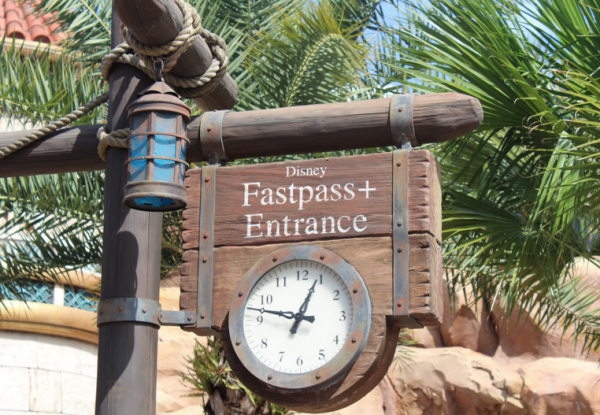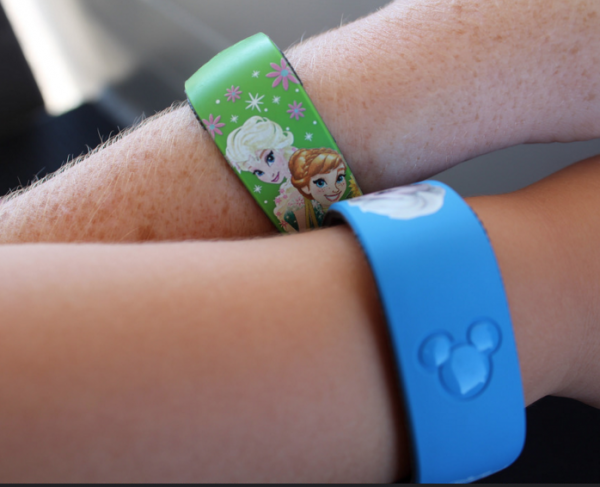
The May issue of Fast Company magazine, a periodical focused on trend-spotting in the tech industry, included a sprawling investigation of the design, launch, and implementation of Walt Disney World's MyMagic+ system. With dozens of central figures going on record, including Chief Operating Officer Tom Staggs and Imagineering executive Joe Rohde, the FastCo feature represents something of an oral history of the MyMagic+ development process, focusing on the problems it faced and the lessons the company has learned.
It's a fascinating read, but for Disney fans, it might seem somewhat concerning.
Ever since Michael Lewis' influential book about the Oakland A's, Moneyball, businesses have idealized a kind of brash iconoclasm in their decision making. Traditions and old-timey romanticism are usually treated with contempt – the phrase “we've always done it like that” is seen as akin to a swear word.
Of course, it should be immediately apparent that applying this type of logic and thought process to an entity as reliant on nostalgia and history as Walt Disney World is an exercise in stupidity, and yet, this seems to be exactly what occurred in the development of MyMagic+.
Now, I'm not going to break down the Fast Company article in great detail. It's incredibly interesting, and I'd encourage all of you to read it. Instead, what I'd like to do is take a look at exactly what the subtext of that article has to say about Walt Disney Imagineering's place within the Disney ecosystem. If you read the piece, you might be as concerned as I am. Here's why:
1. Design is no longer the realm of just the Imagineers'
The biggest point of tension uncovered in the FastCo piece is that the Disney company subcontracted out the development of some of its RFID infrastructure to a company called Frog. Frog, clearly, is not Walt Disney Imagineering, and so it seems as though WDI was frustrated that the company went over their heads to build the technical backbone MyMagic+ would sit upon.
Now, I don't work for Imagineering (yet! I'm waiting by my phone, Mr. Rohde), but I have to think Imagineering actually didn't care much about the ones and zeroes. Instead, I think they were more frustrated by the fact that Frog also seemed to be calling the shots about how guests would interact with the technology – and if you want to make an Imagineer mad, the easiest way to do that is to mess with the guest experience.
The article specifically cites tension over the installation of the FastPass+ return kiosks. The famous “touch Mickey to Mickey” posts surrounding the FastPass entrance of each attraction caused much friction because Frog wanted to make sure they all looked the same – giving guests a clear visual marker. WDI wanted the posts to blend in as much as possible, caring far more about the immersive story than any kind of subconscious guest training.
In isolation, maybe this one story doesn't seem like that big of a deal, but the bigger concern is what it means moving forward. Essentially, the Walt Disney Company told Imagineering that attraction and guest experience design – something which, for the most part, exists solely in their purview – is something they'd be willing to farm out in the right circumstances. They're basically letting people who don't come from the same school of thinking as the Imagineers design attractions. And, clearly, that makes Imagineers nervous.
And with good reason. Their job is to tell stories, and the moment that goes by the wayside in favor of technical infrastructure, Disney's lost a bit of its soul.
2. They're painted as traditionalists
There's a scene in the film version of Moneyball where Billy Beane (played by Brad Pitt) is sitting at his table of scouts discussing the baseball players available to the team. The scouts are largely ridiculed, focusing on things like a player's looks instead of his ability to play baseball. The message is clear: The old guard may think they're doing things correctly, but they're really just afraid of change.
That is clearly how some of Disney's executives picture the Imagineers. Here's how one executive tried to explain it, in euphemistic terms:
"Imagineering is an incredible organization but it has become as institutional as the rest," says a former high-level Disney leader. "They dream of building these big icons of their creative expression, but when a capital budget shows we’re going to invest in changing the established guest experience rather than spend on a big fixed asset, that doesn’t get met with love."
The word “institutional” should be a red flag to anyone reading. This Disney executive isn't just saying Imagineering was opposed to changing the guest experience, they're saying there's an institutional entropy in place to prevent such change from happening.
The problem here, of course, is that Walt Disney World isn't Silicon Valley. The “next new thing” isn't always as important as making sure the old new thing is still working right. Painting Imagineering as intransigent traditionalists not only sells the work they do short, but it also shows that those in charge don't fully understand what makes Walt Disney World successful. It's not technological gimmicks – it's the embrace of that past and its timelessness. Call that traditionalist if you want, but that's pretty reductive.



Comments
A DEAFENING sentence in #5....
"What those in charge don't seem to realize is that protecting that identity is Imagineering's true purpose."
AS both a 26 ONCE WDW Cast Member musician and a ONCE visitor, the traditions of yesterday are only a pathetic vague remembrance. In fact, if you, as a new employee at WDW, were to attend the Traditions Class on your first day, you'd be a might disappointed to have the first hour of that first day WASTED by a TSC union member's rant reminding you that "Mickey Mouse is a TEAMSTER!"
In the end, so much of the "magic" depended on it's employees throughout the Disney system and this great article really spells out exactly why the likes of why, the likes of long ago Disney goers and employees are so disappointed and what the new breed of lovers....will never know what they missed.
Sadly I believe Disney is headed towards the Universal, Sea World and Busch Garden's structure. An amusement park that will always be a cut above the others but for the cost it is becoming less worth it. Mine Train was farmed out to outside development and while it is impressive it still doesn't hit all the Disney notes. Magic Bands have removed the magic of Disney for a huge cost to Disney that is now passed on to the guest. What do they really do-? Park admission, fast passes and allow you to buy things. My Disney VISA card did that before. The magic+ fast pass has not improved the wait times but changed the stand-by line to all day line and the fast pass to stand-by. I have always dreamed of working for Disney since I was a kid but after 100+ visits in my life and watching the transition from Walt's dream to Bob Igor's cash cow I am starting to loose that desire to work for the Mouse. Why- because it's not so much the mouse today. It is ever so clear that the Imagineering magic is taking a turn. If you only visit a week or two a year it's difficult for you to see. This year I shall be faced with a tough decision. If Disney removes the option for guests to bring water, snacks and a light meal type items in to the park I will stop purchasing Annual Passes. I am at a breaking point and should Disney remove something that so little that made Disney different from the other parks I will choose to spend my thousands each year elsewhere. I am loosing the magic feeling. I never thought this would happen.
Great article with insights that appear spot on given what we know about Imagineering and MyMagic+. Given the lame feeling of the Frozen announcements today, I'm starting to think that the Disney ethos is really gone.
I worry that we will never see another stand alone attraction from Imagineering such as Expedition Everest. In the Moneyball era, if the attraction doesn't move Blue Rays, downloads or merchandise I don't see it being built.
I am in my early 40's and am a disneyphile, my first trip to Disney being at 6 months old during holiday season in 1972. I have since been to Disney parks more than 200 times. I am in the busiest world and can say that what Disney is currently doing is tragic to be modest. I have spent a great deal of my income on this company over the years happily, but as they move forward they are losing g their appeal simply because it no longer feels like Disney to me! I've seriously considered retiring my annual pass and switching to it's competition Universal, while lacking the nostalgia and wonder that was Disney was famous for, at least I know where I stand with them .